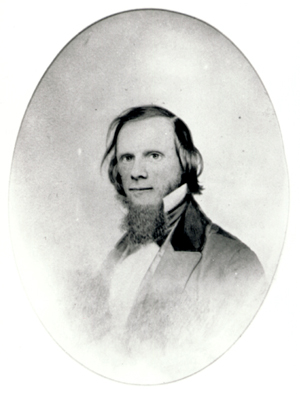Isaac Sprague
 Isaac Sprague (September 5, 1811 – 1895) was a self-taught landscape, botanical, and ornithological painter. He was America's best known botanical illustrator of his day.
Isaac Sprague (September 5, 1811 – 1895) was a self-taught landscape, botanical, and ornithological painter. He was America's best known botanical illustrator of his day.Sprague was born in Hingham, Massachusetts and apprenticed with his uncle as a carriage painter.
In 1840, a young Sprague met John James Audubon, who had admired Sprague's bird drawings. In 1843, Sprague served as an assistant to Audubon on an ornithological expedition up the Missouri River, taking measurements and making sketches. Sprague's pipit (''Anthus spragueii''), an uncommon and inconspicuous bird, was discovered on that expedition and named for Sprague. Some of Sprague's fine drawings were incorporated into Audubon's later publications, without credit. Sprague's diary of this expedition is in the Boston Athenaeum.
In 1845, Sprague met Asa Gray (1810–1888) of Harvard College, and, over many years, Sprague illustrated several of Gray’s works, including the plates for the atlas (1857) to "Botany. Phanerogamia" in Charles Wilkes' ''United States Exploring Expedition During the Years 1838, 1839, 1840, 1841, 1842'' (1845–1876). He also illustrated Asa Gray and John Torrey's various volumes of the U. S. War Department's ''Reports...'' (1855–1860), as well as works for George B. Emerson, George Goodale, and Alpheus Baker Hervey.
In 1960, Harvard University's Houghton Library exhibited approximately 100 of Sprague’s paintings, drawings and illustrations. In 2003, Sprague's works were included in the Hunt Institute’s exhibition ''American Botanical Prints of Two Centuries''.
Major collections of Sprague's work are held by the Boston Athenaeum, the Museum of Fine Arts (Boston), the Smithsonian Institution (on indefinite loan to the Hunt Institute for Botanical Verification, Carnegie Mellon University), and by Harvard University.
Provided by Wikipedia


